About the war graves
Article | Last updated: 16/01/2024 | Ministry of Culture and Equality
There are 29 450 foreign war graves in Norway. All foreign war graves are maintained and provided for by the Norwegian Government.
The Ministry of Culture and Equality is officially responsible for foreign war graves in Norway, and for the approximately 300 Norwegian war graves abroad. The Norwegian War Graves Service is part of the Ministry's Department of Cultural Heritage.
On assignment from the Ministry, The Falstad Center administers the database War Graves in Norway, and carries out research and documentation work on the war graves and those buried.
1. Foreign war graves in Norway
1.1 Soviet Union
From 1941 to 1945, an estimated 100 000 Soviet prisoners of war were interned in Nazi-occupied Norway. 14 000 of them lost their lives. They were found throughout the country, buried for the most part by German forces in close proximity to the prison camps, in chalky, peaty or clay soil without drainage. In many places, the deceased were buried in mass graves and in several layers. A considerable number were found in mountainous terrain inaccessible by road, often in unmarked graves. Most of the Soviet casualties were found in North Norway.
In 1951, the Norwegian Government decided that Norway would take on the task of providing dignified graves for the Soviet casualties and would subsequently maintain these graves and pay all related costs. The Ministry of Defence built a war cemetery on the island of Tjøtta in the Helgeland district, and the War Graves Service brought the remains of the Soviet casualties found in various parts of North Norway to this cemetery.
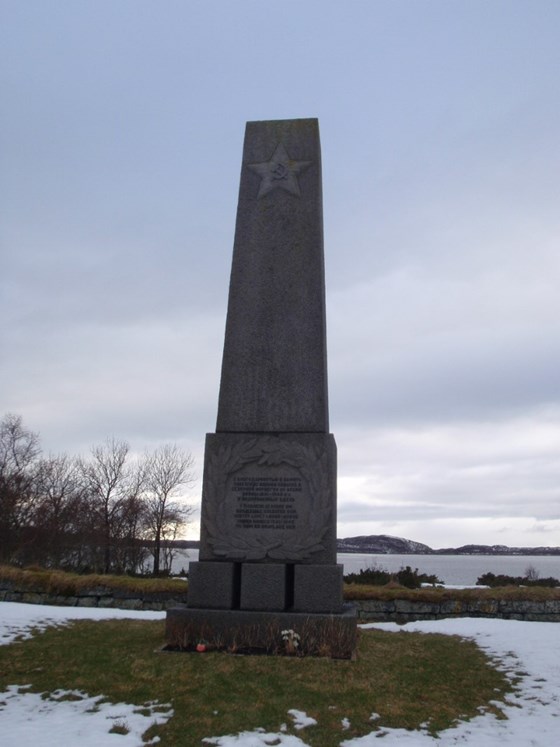
On 27 November 1944, the cargo ship MS Rigel, which was under German command, was sailing south along the Helgeland coast with a full load of prisoners of war when it was attacked and sunk by Allied aircraft near Rosøya island, west of Tjøtta.
According to the captain’s report, there were 2 456 casualties. The wreck of the Rigel was originally defined as a ship burial, but after a while it was decided to bring the remains of the casualties to shore. The removal of the wreck began in spring 1969 and was concluded in autumn 1970. The remains found in and around the wreck were buried at Tjøtta International War Cemetery, next to Tjøtta Soviet War Cemetery. The ship’s papers for the Rigel were lost in the attack, and so the casualties were all buried as unknown.
Among the Soviet casualties buried in Norway, there are Russians, Ukrainians, Kazakhs and a number of other nationalities that made up the former Soviet Union. With the exception of those buried in Mo i Rana, at Polmak Churchyard, Tromsdalen Cemetery in Tromsø and at Årøya, the Soviet casualties in North Norway are buried at Tjøtta Soviet War Cemetery and Tjøtta International War Cemetery.
Most of the Soviet casualties who died in South Norway are buried at six Soviet war cemeteries constructed by the Norwegian War Graves Service: Verdalsøra (Ørmelen) War Cemetery, Vinjeøra War Cemetery, Oppdal War Cemetery, Hol War Cemetery in Sunndal, Jørstadmoen War Cemetery and Haslemoen War Cemetery in Våler i Solør.
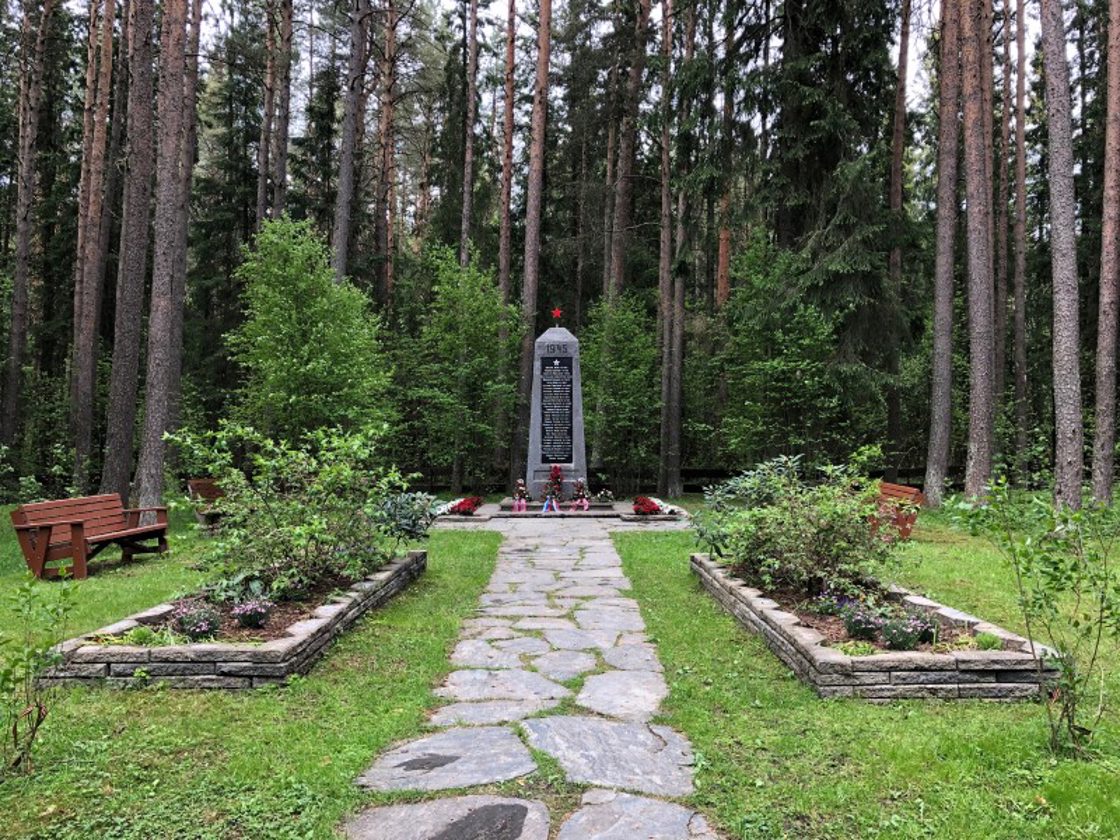
There are also large Soviet war graves plots at the Western Cemetery (Vestre gravlund) in Oslo, Nygård Cemetery at Laksevåg in Bergen, Lista Churchyard in Vanse at Lista, Lademoen Cemetery in Trondheim and Eiganes Cemetery in Stavanger. The remaining Soviet casualties are buried in individual graves in 46 different cemeteries in South Norway.
1.2 Germany
There are 11 500 German war graves in Norway, consolidated in five German war cemeteries. These are Alfaset German War Cemetery in Oslo, Botn German War Cemetery in Saltdal, Narvik German War Cemetery, Havstein German War Cemetery in Trondheim, and Solheim German Cemetery in Bergen. In addition, two German casualties are buried in Kristiansand Churchyard and one casualty is buried in Sæbø Churchyard in Hjørundfjord.
1.2.1 Alfaset, Oslo
In the period from 1940 to 1945, the German authorities built a war cemetery at Ekeberg in Oslo. In accordance with a decision taken by the Storting on 8 October 1952, the war casualties buried there were moved to a new war cemetery at Alfaset in the Groruddalen district of Oslo. The transfer of the remains began on 16 October 1952, and was completed on 17 November of that same year.
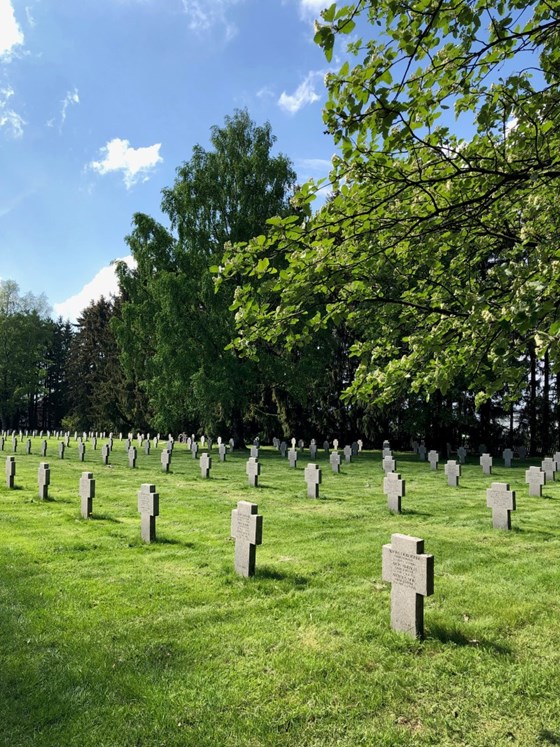
German casualties originally buried at Bogstad, Bolærne, Borre, Bragernes, Brevik, Dovre, Drammen, Eidanger, Elverum, Ekeberg, Fredrikstad, Folldalsfjella, Gol, Grefsen, Hagaskogen, Hamar, Hedenstad, Herad, Hole, Hovin, Lillehammer, Midtronden-Storronden, Rossabø, Røros, Stavern, Vågsvåg and several other places were also transferred to Alfaset German War Cemetery.
In addition to the war graves from the Second World War, there are a number of German war graves from the First World War at Alfaset.
The Norwegian Government paid for the granite name plates, while Volksbund Deutsche Kriegsgräberfürsorge e.V. provided groups of crosses, a gate to the cemetery, a memorial hall and a toolshed with a toilet. The recumbent name plates were later replaced with standing granite crosses.
There are 3 209 casualties buried at Alfaset German War Cemetery.
1.2.2 Botn, Saltdal
Established in 1954, Botn German War Cemetery is located in Botn in Saltdal Municipality. The remains of the war casualties buried there were originally buried in other parts of North Norway, including Alta-Elvebakken, Banak, Bodø, Djupvik, Fauske, Hammerfest, Hatteng, Hatterfjellet, Karasjok, Kirkenes churchyard, Prestøya, Neiden, Nesseby, Nordreisa, Øvergård, Sandnessjøen, Setermoen, Sommerlyst, Tajord, Tromsø, Vardø, Vassmo and several other places.
The Norwegian Government identified and transferred the casualties with the assistance of the German war graves commission, Volksbund Deutsche Kriegsgräberfürsorge e.V.
The Norwegian Government paid for the grave markers in Oppdal slate, a fence surrounding the cemetery and the landscaping, while Volksbund Deutsche Kriegsgräberfürsorge e.V. covered the other costs of establishing the cemetery.
There are 2 742 casualties buried at Botn German War Cemetery.
1.2.3 Narvik
During the Second World War, the German authorities established a war cemetery connected to Narvik Cemetery. There were 1 250 casualties buried there by the end of the war. An additional 221 were moved there after the war from Skjold (Kvesmesnes), Hatteng, Nordmo, Målselv, Finneidfjord, Balsfjord, Sørreisa, Andenes, Lund, Evenes, Skånland, Lenvik, Beisfjord, Ballangen, Lødingen, Våg (Engeløya), Kittdal, Bjerkvik, Kjøpsvik, Sagelv (Storsteinnes) and several other places.
Narvik German War Cemetery is the northernmost German war cemetery. German casualties who were originally buried in the areas around Nordkapp and Hammerfest were not transferred to Narvik due to transport-related issues, but were instead brought by ship to the Botn German War Cemetery in Saltdal Municipality.
There are 1 471 casualties buried in the plot of German war graves at Narvik City Cemetery.
1.2.4 Havstein, Trondheim
In Trondheim, German casualties were originally buried in a dedicated plot at Stavne Cemetery. However, when this plot became too small, the German authorities built a seperate war cemetery at the Havstein farm at Byåsen in Trondheim.
There were 1 061 German war casualties buried there by the end of the war. From 1955 to 1958, an additional 1 931 were moved from Arendal, Aukra, Austad, Bolsøy, Egersund, Falnes, Grong, Kopervik, Kristiansand, Lademoen, Levanger, Lyngdal, Mandal, Molde, Namsos, Nærbø, Ølen, Oppdal, Sauda, Snåsa, Søgne, Sola, Soma, Spangereid, Stavanger, Stavne, Tromøy, Tveit, Vanse, Værnes, Verdal, Åkra, Ålesund, Åndalsnes, Åsen and several other places.
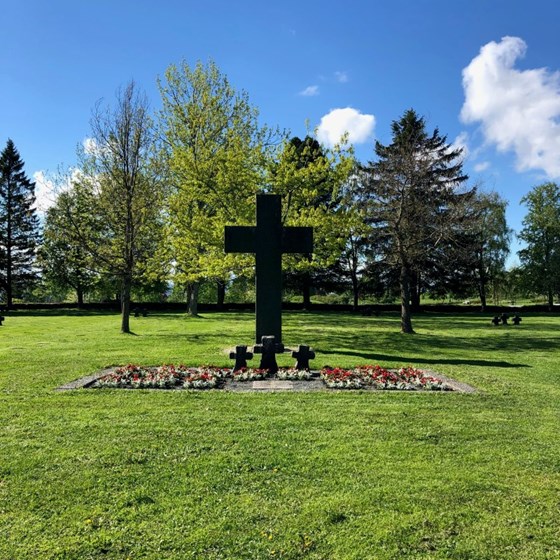
The casualties relocated from these places were reburied in individual graves at Havstein German War Cemetery.
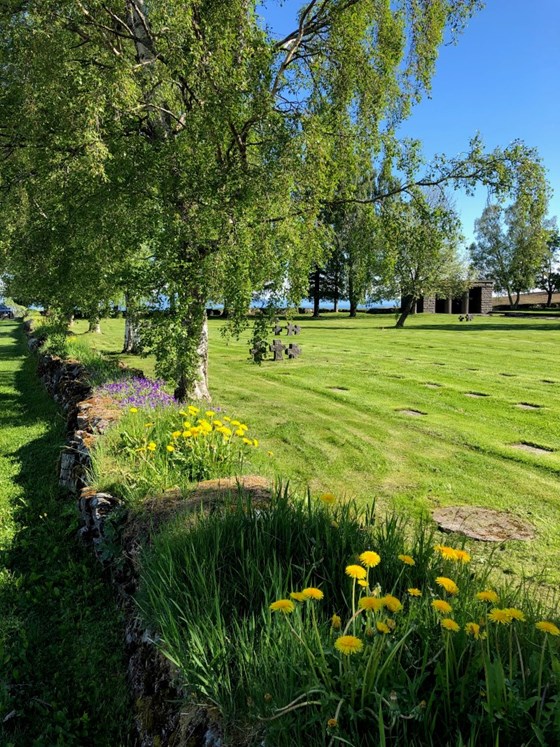
The Norwegian state paid for the recumbent grave markers, while Volksbund Deutsche Kriegsgräberfürsorge e.V. provided groups of crosses, a gate to the cemetery, a memorial hall and a toolshed with a toilet.
There are 2 992 casualties buried at Havstein German War Cemetery.
1.2.5 Solheim, Bergen
In 1940 German casualties were buried in a dedicated plot at the Solheim Cemetery in Bergen. This was a temporary solution, as a German war cemetery was planned to be built outside the city. However, these plans never came to fruition, so after the war the Norwegian authorities decided that the German war casualties would remain buried at Solheim Cemetery. In addition, the remains of German war casualties were transferred there from Ådland, Fana, Florø, Fosen, Lærdal, Møllendal, Nesttun, Stokkenes, Voss, Ytre Arna and several other places.
The Norwegian authorities paid for the recumbent grave markers. These were later replaced by granite crosses paid for by Volksbund Deutsche Kriegsgräberfürsorge e.V.
There are 1 085 casualties buried at Solheim German War Cemetery.
1.3 Yugoslavia
There are 2 410 Yugoslavian war graves in Norway. These are the graves of prisoners of war from the various nations and ethnic groups that made up the former Yugoslavia. A dedicated cemetery, the Botn Yugoslav War Cemetery, was established in Saltdal Municipality. There are also Yugoslavian war graves at Lademoen and Moholt Cemeteries in Trondheim, at Os Churchyard at Osøyro in Bjørnafjorden, at Jørstadmoen War Cemetery and at Støren Churchyard in Midtre Gauldal.
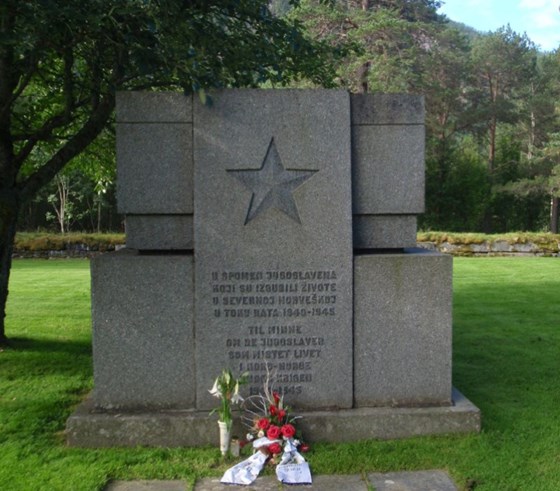
Most of the buried casualties are registered by name. The Norwegian War Graves Service has supplied and maintains the headstones and graves of Yugoslavian war casualties.
1.4 Commonwealth of Nations (Commonwealth War Graves)
There are 1 194 Commonwealth War Graves in Norway. The casualties came from the UK, Canada, Australia, New Zealand and South-Africa. These graves were only to a limited degree concentrated after the war, and are located in 74 cemeteries in the north and south of Norway.
The identities of most of the casualties are known. Most of the buried soldiers are registered by name. The Commonwealth War Graves Commission (CWGC) has supplied and maintains the headstones and stone memorials, whereas the Norwegian War Graves Service carries out the day-to-day maintenance.
- Search for the names of and personal information for Commonwealth war casualities buried in Norway (krigsgraver.no/en)
- You may also search for the locations of cemeteries and the buried using the CWGC’s database (The Commonwealth War Graves Commission)
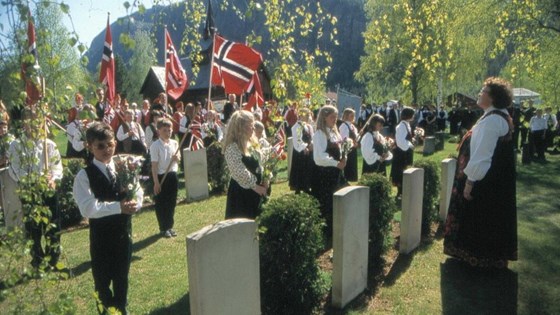
1.5 Other nations
There are 167 Polish war graves in Norway. These are located in cemeteries in Narvik, Håkvik, Moholt in Trondheim, Eiganes in Stavanger, Jørstadmoen and the Western Cemetery (Vestre gravlund) in Oslo. There are 131 French war graves in Norway: at Narvik New Cemetery and Namsos Churchyard, and there are 23 Dutch war graves at the Western Cemetery (Vestre gravlund) in Oslo.
There are seven Swedish war graves in Norway. These are located in the Western Cemetery (Vestre gravlund) in Oslo, Dolstad Churchyard in Mosjøen, Os Churchyard in Østerdalen and in Drevsjø Churchyard.
There are twelve Danish war graves in the Western Cemetery (Vestre gravlund) in Oslo, and two Finnish war graves in Hatteng Churchyard in Storfjord, Troms.
1.6 Memorial parks and memorials
At a meeting on 26 July 1954, the parties in the Norwegian-Soviet War Graves Commission came to an agreement on the placement of the official war memorials at former Soviet war cemeteries. They also agreed on the design and wording of the memorials, which bear the following inscription in Norwegian and Russian:
“Til minne om de sovjetiske soldater som mistet livet i Norge i 1941-1945 og som var gravlagt her.” [In remembrance of the Soviet soldiers who lost their lives in Norway in 1941–1945 and who were buried here.]
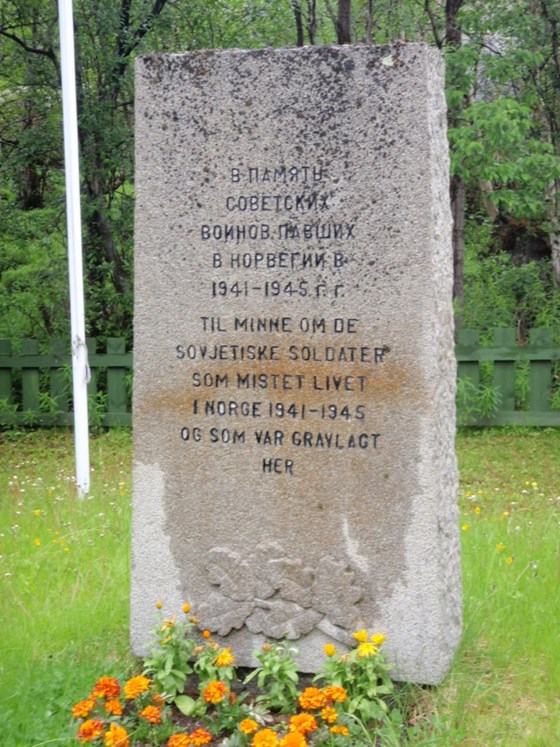
Similar memorials have been erected at the following locations:
- In Finnmark County: Skafferhullet, Noselva (Høybuktmoen), Klubben (Indre Billefjord) and Elvebakken near Alta.
- In Troms County: Abaja, Hatteng Churchyard, Kittdal, Lulle in Skibotndalen and Skibotn Churchyard in Storfjord, Vang Churchyard in Balsfjord (previously located at Skjold gård at Øvergård), Kirkemo Churchyard in Bardu, Tromsø Cemetery, Haraldshaugen at Øverbygd in Målselv and Sørreisa Old Churchyard.
- In Nordland County: Furumoen in Narvik, Tømmerneset Churchyard at Vassmo in Hamarøy, Kobbvassgrend, Elvkroken and Helland Churchyard in Sørfold, Fauske Churchyard, Bodin Churchyard, Bodø Churchyard, at Botn and Hestbrinken in Saltdal, at Bolna, Krokstrand and Nabbvollen in Rana and at Mosjøen Cemetery.
- In Agder county: at Østhasselstrand in Nesheimmarka at Lista.
In addition to the war graves and the war memorials at present and former war cemeteries, the Norwegian War Graves Service also provides for the maintenance of the memorial park at the Western Cemetery (Vestre gravlund), where a number of war memorials have been erected in memory of casualties from different countries.
2. Norwegian war graves
2.1 Norwegian war graves in Norway
Based on a proposal by the Presidium of the Storting, the Government decided in 1945 to issue a National Roll of Honour with biographies on Norwegians who had lost their lives in or due to the war. The four-volume Våre falne contains some 11 000 biographies.
- The four-volume work Våre Falne is digital available (in Norwegian only) (vg.no)
- A digital register of the Norwegian war time seafarers (https://www.krigsseilerregisteret.no/en)
- Database of Norwegians who were political prisoners during WW2 (About - Norsk digitalt fangearkiv 1940-1945 - Fanger.no)
Statistics Norway has compiled statistics on war-related deaths in the period from 9 April 1940 to 8 May 1945, and has registered 10 262 deaths. This figure also includes the 689 Norwegians who fell on the Eastern Front, serving in German troops. This group is not recognised as Norwegian war casualties.
The graves of the roughly 10 000 Norwegian casualties are found in nearly all the approximately 2 000 cemeteries in Norway. They are for the most part private graves, which means that the closest family members/plot leaseholders have the practical and financial responsibility for the maintenance of the graves, as well as the right to make all decisions regarding them. There are no specific preservation regulations that apply to these graves as a whole.
These Norwegian war graves in Norway have not been part of the responsibility of the War Graves Service, nor are they encompassed by the regulations and grant scheme relating to war graves.
In a number of cases, the local community, municipality or cemetery authority, in consultation with the family members of the deceased, has erected and paid for a more official memorial at the graves of local war heroes. Local authorities have also established special Norwegian war graves plots in certain burial Cemeteries. In such cases it is reasonable for the cemetery authority to cover the maintenance cost, for the costs to be financed by the municipality over the municipal budget, and for the grave to be placed under permanent preservation. This presumes that the closest family members are not opposed to these actions, or at least requires their consent during the ordinary preservation period during which they are entitled to take decisions regarding the grave.
Section 27 of the Regulations under the Funeral Act
According to Section 27 of the Regulations under the Funeral Act, the local cemetery authority (joint parish council) may:
decide that areas of a cemetery or individual graves with memorials and other ornamentation should be preserved. Such a decision may be made in cases when memorials in an area of a cemetery or individual graves are of a certain age, represent a historic style, have distinctive local features in terms of the materials used, tell an interesting personal history or are unique in other ways.
The ministry has sent out a circular asking the local cemetery authority to consider applying the provision to protect graves and war memorials for Norwegians who died in war.
2.2 Norwegian war graves abroad
The tasks of the Norwegian War Graves Commission and Norwegian War Graves Service originally included the tracing, identification and registration of fallen Norwegian soldiers, repatriation of the remains of these soldiers at the request of their family members, and the repair, marking and maintenance of graves of fallen soldiers who were not repatriated.
In the years following the war, comprehensive searches were carried out in Europe, and with the help of the authorities in other countries, it was possible to identify 367 fallen Norwegian soldiers.
The remains of 296 of these were repatriated to Norway and handed over to their family members. The graves of those who were not repatriated were repaired and marked with official Norwegian war grave headstones.
The naval authorities were responsible for the war graves of Norwegian merchant seamen abroad. At the recommendation of the then Ministry of Industry, Craft and Shipping, the Norwegian War Graves Service took over the responsibility for the repair, marking and maintenance of a number of these graves. A number of the fallen from the Norwegian Merchant Navy were also repatriated at the request of their next of kin.
About 300 Norwegian war graves abroad have been registered, belonging to the fallen from both the Norwegian Armed Forces and the Merchant Navy. The war graves are located in Algeria, Australia, Belgium, Canada, Denmark, Egypt, France, the Faroe Islands, Gambia, Ghana, Iraq, Ireland, Iceland, Israel, Italy, Libya, Netherlands, New Zealand, Poland, Sierra Leone, United Kingdom, Sweden, South Africa, Tunisia, Germany. Most Norwegian war graves abroad are maintained by the Commonwealth War Graves Commission.
The Register of Norwegian War Graves Abroad is being updated.